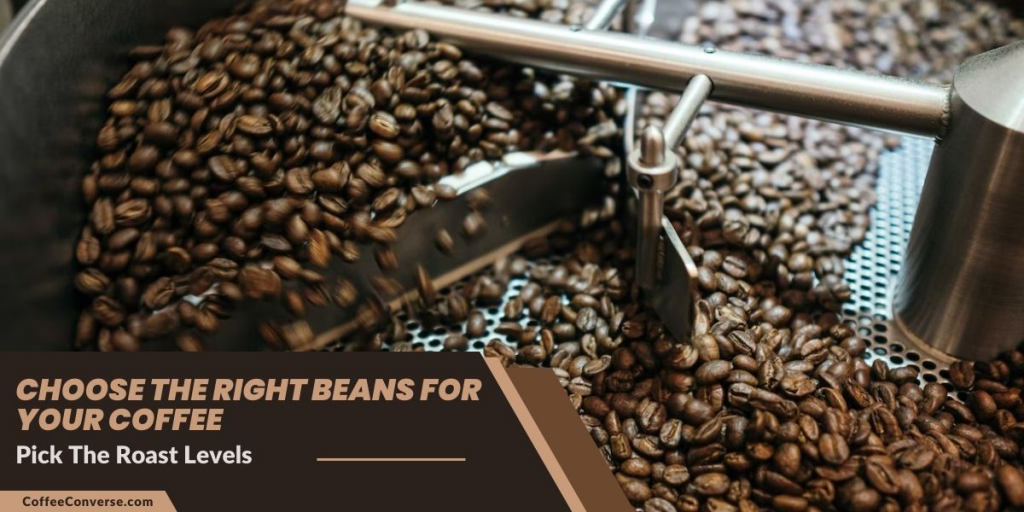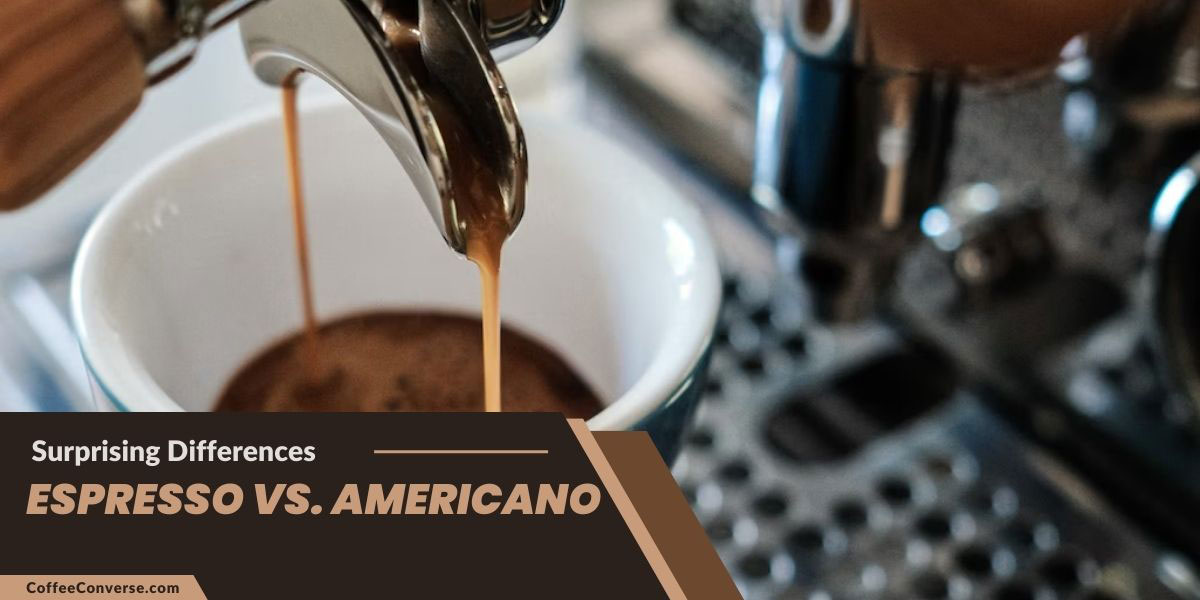There’s nothing worse than taking that first sip of coffee in the morning —and realizing it tastes like mud. It’s a feeling that can ruin your day, especially if you’re a coffee lover like we are.
Luckily, choosing the right beans for your coffee can help you avoid this unpleasant experience. In this article—we’ll share some tips on how to select the right beans and achieve a delicious, well-balanced cup of coffee.
Know The Types of Coffee Beans
Let’s talk about the types of coffee beans. There are two main types:
- Arabica
- and Robusta.
Arabica
Ah, Arabica beans! These magnificent little nuggets are known for their top-tier quality and complex flavor profile. They’re grown at such high altitudes that they practically touch the sky, which gives them a delightful, fruity taste that’s sure to tickle your taste buds.
Robusta
Now, let’s talk about Robusta beans. These guys are like the laid-back, low-maintenance cousins of Arabica beans. They’re cheaper and easier to grow, but that doesn’t mean they’re any less special. With a caffeine content that could rival your morning energy drink, Robusta beans pack a punch. And while their flavor might be a little more robust (hence the name), they still have a unique and unforgettable taste that’ll leave you wanting more. Just watch out for that bitter bite!
So, which one should you choose?
The answer is, It really depends on your personal preference. If you’re after a coffee experience that’s gentle and intricate in flavor—then Arabica beans are the way to go.
But if you’re the type who craves a bold and bitter taste with a hefty dose of caffeine to boot, then Robusta beans might be right up your alley.
Pick The Roast Levels

Another factor to consider when choosing beans is the roast level. Coffee beans are roasted to different levels, which affects their flavor and strength. Here are the most common roast levels:
Light roast
This roast produces a mild, sweet coffee with a light body and acidity. The beans are roasted for a shorter period of time, so they retain more of their natural flavor.
Medium roast
This is the most popular roast level, producing a well-balanced coffee with a slightly sweet taste and medium body. The beans are roasted for a bit longer than light roasts, giving them a richer, more complex flavor.
Dark roast
This roast produces a strong, bold coffee with a heavy body and low acidity. The beans are roasted for a longer period of time, which gives them a smoky, almost burnt taste.
Again, it’s all about personal preference.
If you like a mild, delicate coffee—go for a light roast. If you prefer a bolder, more robust flavor, a dark roast might be more your thing.
Match The Grind Size
The grind size of your beans also affects the taste of your coffee. The general rule is that the finer the grind, the stronger the coffee. Here are the most common grind sizes:
Coarse
This grind is best for French press or cold brew coffee. The beans are ground into large pieces, which allows for a slower extraction and a milder taste.
Medium
This grind is best for drip coffee makers or pour-over methods. The beans are ground into a medium size—which allows for a balanced extraction and a well-rounded flavor.
Fine
This grind is best for espresso machines. The beans are ground into a fine powder, which allows for quick extraction and a strong, intense flavor.
If you’re not sure which grind size to use, experiment a little. Try different grinds and see which one produces the taste you like.
Make Sure The Freshness
When it comes to coffee, freshness is the name of the game. If you want your coffee to taste like heaven in a cup, then you need to get your hands on the freshest beans possible. How fresh? Well, ideally you want beans that have been roasted recently. The closer to the roasting date, the better the taste.
But don’t sit on those beans for too long! You want to use them up within two weeks of the roasting date. That’s right, two weeks is all you get to experience the full flavor profile of your beans. After that, they start to lose their magic.
Conclusion
In conclusion, selecting the right beans for your coffee can make a world of difference in your daily caffeine fix. You can choose the gentle and intricate flavor of Arabica beans. Or you can choose the bold and bitter taste of Robusta beans, it all comes down to personal preference.
Consider the roast level and grind size as well to achieve the perfect cup. And don’t forget about freshness!
For the best taste experience, aim for beans that have been roasted recently and use them up within two weeks. With these tips in mind, you’ll be well on your way to enjoying a delicious, well-balanced cup of coffee every morning. And of course free from mud taste on your cup of coffee. Cheers to that!
FAQs
Can I use any beans to avoid the mud taste?
No, not all beans are created equal when it comes to avoiding the mud taste. We recommend using beans that are freshly roasted and have a medium to light roast. Dark roasts can lead to a muddy taste in your coffee.
Can I use pre-ground coffee instead of whole bean coffee?
While pre-ground coffee is convenient, it can lead to a muddy taste in your coffee. This is because pre-ground coffee is exposed to air, causing it to lose flavor and freshness. Grinding your coffee beans just before brewing ensures maximum flavor and aroma.
What beans should I use for a smooth coffee?
When looking for a smooth coffee, we recommend choosing Arabica beans. These beans have a lower acidity level, making the coffee less bitter and smoother to drink.
Is it better to use single-origin or blended beans?
Both single-origin and blended beans have their own unique characteristics. Single-origin beans are known for their distinct flavor profiles, while blended beans can offer a balanced taste. It ultimately comes down to personal preference.
What are the best beans for a bold coffee?
For a bold coffee, we recommend choosing Robusta beans. These beans have a higher caffeine content and a more intense flavor profile, making them perfect for a strong cup of coffee.
How can I choose the right grind size for my beans?
The grind size of your beans depends on the brewing method you use. For a drip coffee maker, a medium grind works best, while a French press requires a coarser grind. Espresso machines need a fine grind to ensure proper extraction.
Should I choose whole bean or ground coffee?
While pre-ground coffee is convenient, we recommend choosing whole bean coffee and grinding it right before brewing. This ensures maximum freshness and flavor.
Can I use flavored beans to avoid the mud taste?
Flavored beans can mask the muddy taste, but they can also affect the natural flavor of the coffee. We recommend using high-quality, freshly roasted beans for the best flavor.
How can I tell if my beans are stale?
Stale beans have a flat, dull flavor and may even smell rancid. Check the roast date on the packaging and avoid beans that have been sitting for too long.
Are expensive beans always better?
Not necessarily. While expensive beans can be high-quality, they may not always suit your personal taste preferences. It’s important to experiment with different beans to find the ones that work best for you.
Should I choose a light or dark roast for cold brew coffee?
For cold brew coffee, we recommend using a dark roast. The longer brewing process brings out more of the natural flavors, and a dark roast can offer a bold, smooth taste.




